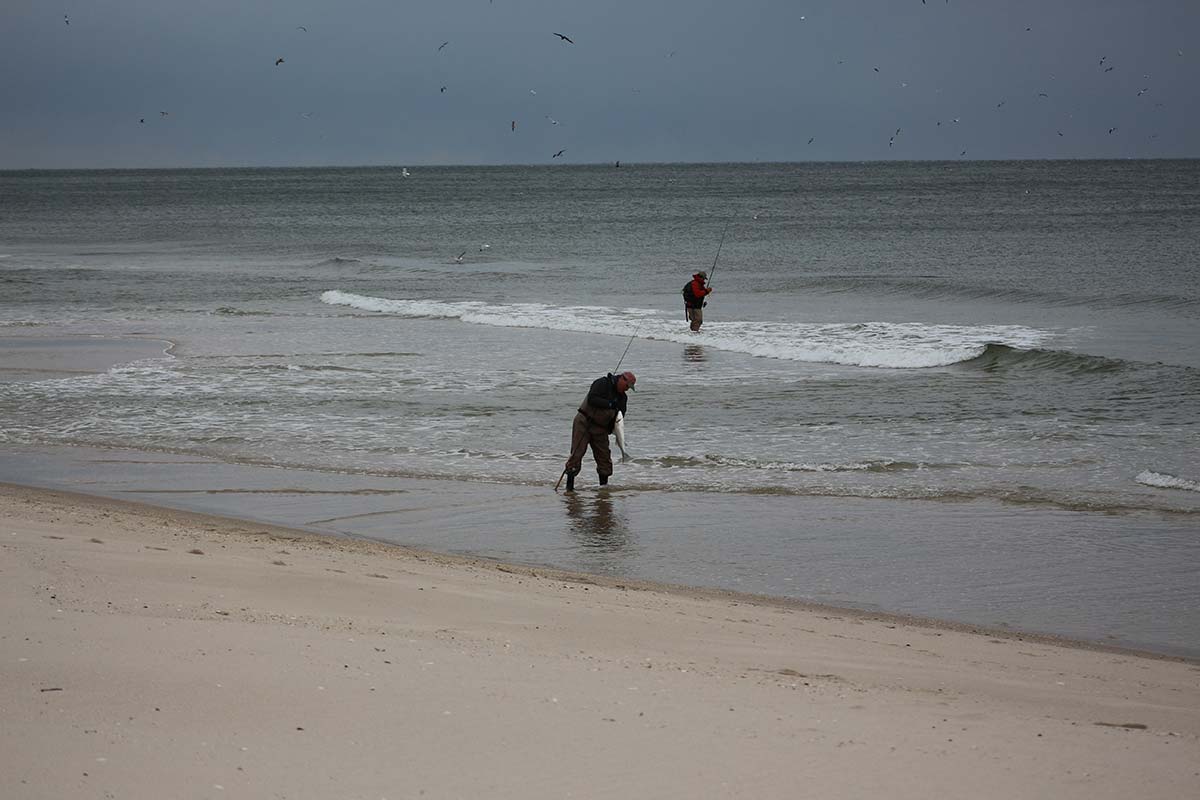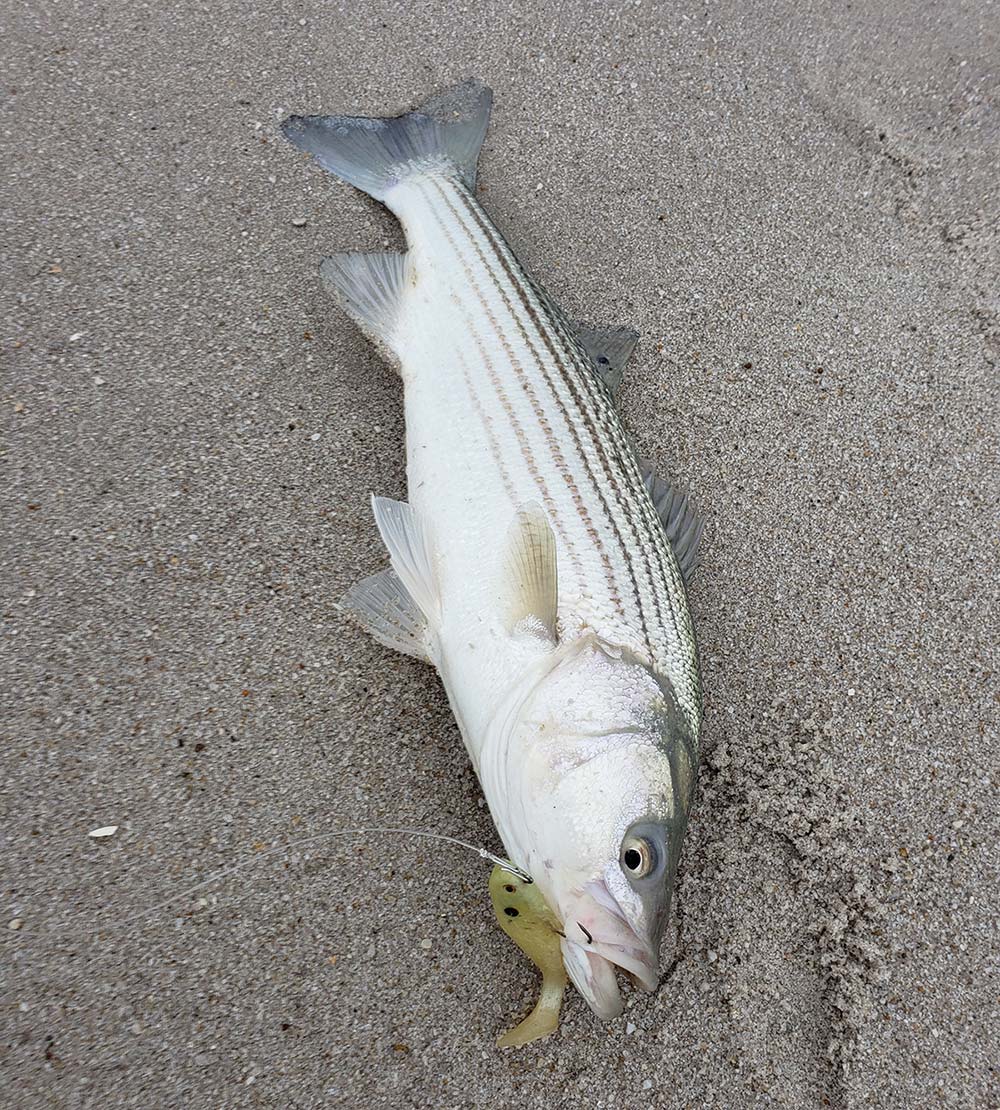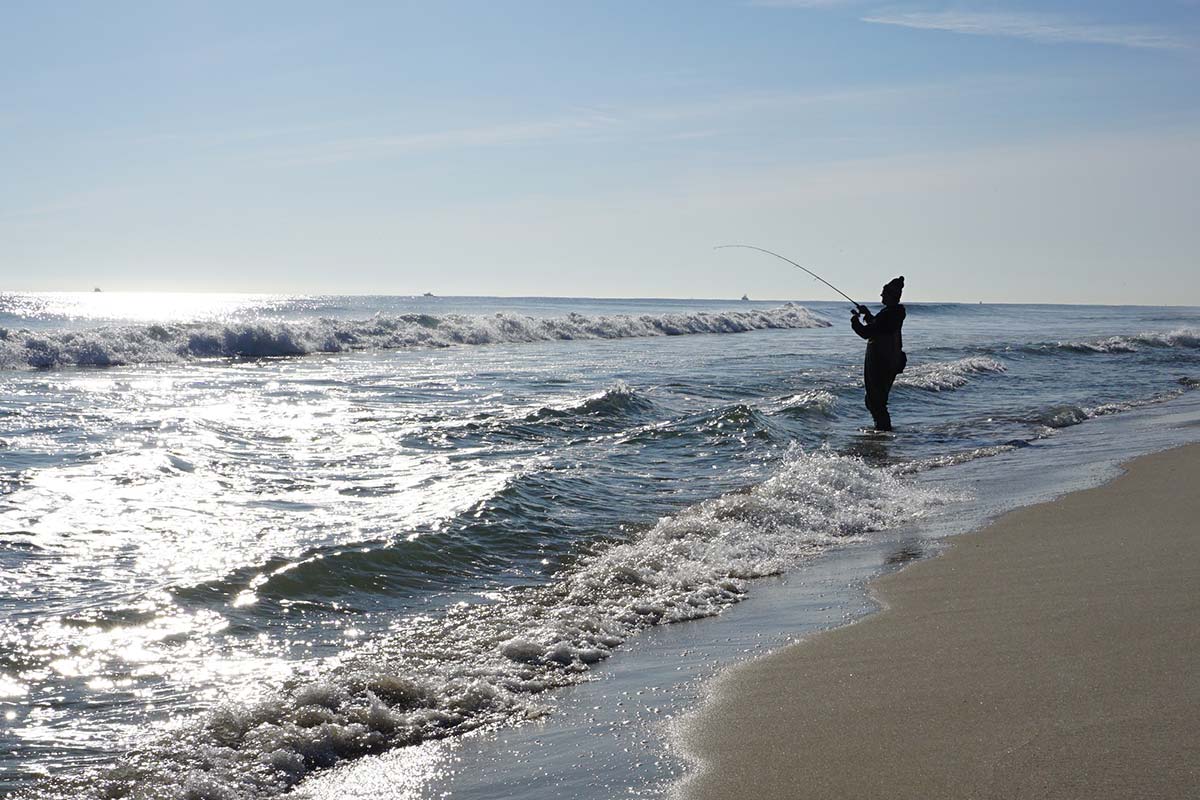
The time has come for some hardcore recon on soft sand beaches.
As darkness fades and purple dawn takes over nothing helps gets me juiced more than watching white combers roll across the bars. Those breakers mean something, despite their beauty alone; they are indicators of soft structure.
When there is no structure there is no life. A great example was a trip I made to the Caribbean, I was snorkeling down along beach nothing under me except white, sand, devoid of life. Then I came upon the reef, a pile of rocks and coral, wow did that ever make a difference; the thing was loaded with fish!
Now fly back north 1,300 miles, and let’s dig in; the same rules apply.
The Cuts
In any surfcasting environment, anywhere, structure is needed to hold fish. Let’s take a look at open sand beaches and soft structure. In its simplest, barest, form soft structure is sand. More specifically: piles of sand strewn about and shaped by the water movements along the shore. When you take piles of sand that are out in front of you, add swell from the ocean, waves are created. Now you have a system that draws the attention of the fish and holds them for periods of time.
As a swell, soon to be waves, rolls into the shallow waters the bottom rises, so to speak, pushing the swell out of the water in the form of a wave. When the wave gets too big and top heavy, it topples over and crashes. The force of the crash on the sand pile then creates havoc below as bait, crabs, worms, and baitfish get pushed by the violence into the trough. In this slough the striped bass waits with a fork in one fin and a knife in the other, bib securely attached! At this point the bass are super-sensitized and ready to strike immediately at anything that gets swept off the bar.
Let’s take a closer look at waves. Waves may come to the beach in sets or trains, that is, consecutive waves in groups. Usually a train will have four to six waves. When a set comes to the beach each wave carries thousands of gallons of water that gets pushed to the shoreline. After four or five waves the trough fills up with so much water that it can no longer hold that water. The water has to go somewhere!! So the water moves parallel to the beach, in a short time it will hit the water that is coming from the opposite direction.
Where these two streams come together you’ll find even more pressure. The water level continues to rise, which at some point will have to drain. When and where it does, a “river” will flow back to the ocean. The shallows will drain as water moves constantly, then as quickly as it drained, it will fill again. This river that drains the trough is what we call “the cut,” where is a sluiceway is carved through the sandbar.
Study Time

Spending some time observing the waves, breaks and cuts, will allow you to get onto the important part, the catching of the fish! So then, how do you attack it? The very first thing you need to do is read the water; to be a good surfman or woman you need to master the art of reading water. It will allow you to catch fish anywhere you wet a line. The first thing I do is look for whitewater or crashing waves. The whitewater means shallow water and it means sandbars or structure. The second very important thing I am looking for is deep water, or ‘green water’ as I like to call it, directly beside the whitewater. It could be beside the bar or it could be between you and the bar (in the trough). On the open beach sandbars are shallow and the cuts are deep water.
A third thing you want to watch for is water movement as it relates to the water coming in over the bar, in post-wave form. You can do this simply by watching the foam on the surface; it may be moving right to left or left to right. This is the water that is making its way back to the river dump. The fish use this movement as a conveyor belt to bring them food. Instead of chasing a meal they let it come to them (very efficient).
Now, in order for bass to be present you need two things, deep enough water to allow fish function and dark enough water. “Dark enough,” you ask? I know, “What the heck you talking about Muller, striped bass do not like bright light conditions!” Your chances of catching a bass by day are certainly not as good as those lower light opportunities, but usually during the bright light of day bass drop out into deeper, darker waters. Thus, as a rule you want to fish dusk to dawn, lowlight conditions. If you fish hard by day and don’t connect, don’t be disappointed. Now to be fair, during migration periods, where bass are feeding constantly, you will have some daytime action. That also depends on the presence of bait!
Starting Cast
Once you have decided on a general area, now let’s focus on exact location and zeroing in on the bite. One technique is dragging your offering off the bar and into the trough. My rule is if you can see the bottom of the trough it probably isn’t deep enough. Do not cast hard and far out onto the bar, it’s mostly a waste of time and energy. Just cast far enough to get your offering onto the bar. Drag your lure or bait off the bar and let it drop, you should be able to feel this happening. You will feel resistance then suddenly a release as it falls off the table. Keep your offering moving, mix in a couple twitches and bang, if fish are present you will be happy in short order.
The second place you will want to cast is off the side of the bar where water is getting swept into the cut. Again I like to cast into the slightly deeper water at the edge of the bar and let it get carried into the cut, then retrieve along the edge. On the other hand, where you do not want to cast is into the deep green water of the hole or cut; for the most part, the fish do not gravitate to these areas as the speed of the river burns up too much energy for them to hold in. Stay out of the hole, stay away from open water.
One last tip for now: keep moving! Do not stand in one place for long. Stay long enough to make a few casts and then get along. You should always be looking for a good place to make your next cast following the above mention criteria.
One question I get a lot is, “What are you throwing?” I am going to say this first, it is more important to hunt down and find where fish are feeding than to decide on what to throw at them. You must remember bass feed in wolf packs, they feed competitively in the violence of the surf. They are reacting instinctively and instantly. Bass do not look at something swimming by and then contemplate if they should consume such a thing; it is a split-second decision and an instant commitment remember if too much time elapses, then another one of their buddies may get the meal. Same thing with color, it is more important to find where the fish are than to contemplate over color.

If you need someplace to start in your decision making process you can do one of two things, match the hatch, or go with something generic. I for one am a big leadhead guy, I love leadheads and rubber. Why? Because it gives me versatility. I want the weight because I can get it deep to where the fish are. I also like the weight because I have good feel with it. The rubber hanging off the back can be anything of a plethora of choices, long and skinny, paddletails, and of multiple colors. It will ultimately be what produces for you which will quickly become your favorite, your confidence lure.
I recently posted a question on my Facebook page about what is the best lure, the responses where wide spread. And just between you and me, the bucktail reigned supreme by quite a number!
Without getting too specific, I favor paddletails, followed closely in second by long, skinny plastics. The detail is in the weight of the leadhead. When fishing soft structure you will quickly learn that some nice fish can be had at very close range and mile-long casts are not necessary. My range for the open beach ranges from 3/8- to 1-ounce in weight. The key is to use just enough weight to get you out and down without dragging bottom. The other factors will be wind speed and direction, lunar stage and tidal stage all contribute to the speed of the water along the beach.
Okay, now your gun is loaded, go out find some nice soft structure and apply the things that I have mentioned and you will open the door to a wonderful world of tracking down and catching bass along the shore.




